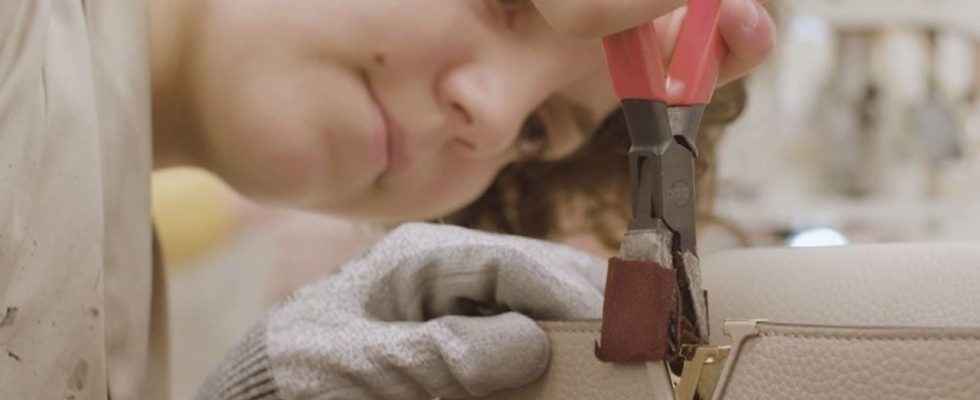Who has never thought about giving up everything to change careers? Sometimes suffered, often chosen, retraining has never bothered the French so much, especially after the coronavirus pandemic. Covid-19. To give meaning to their daily lives, earn a better living or simply get a change of scenery. This is one of the most original routes.
Sometimes you have to pack up… After ten years spent in the tertiary sector, Michèle gave up everything to retrain in leather goods and the making of trunks and boxes at Louis Vuitton. “I have always been a manual worker, I love leather and sewing,” explains this forty-year-old who did not hesitate to leave Toulouse to settle in Paris in order to prepare a work-study CAP at the Institute of Trades. excellence (IME) of the LVMH group. At the end, a permanent contract at the Louis Vuitton workshop in Asnières (Hauts-de-Seine).
Little-known professions which are the main capital of the luxury sector
In the luxury professions, artistic craftsmanship conceals little-known professions: master boot maker, model maker, pattern maker, finisher, embroiderer, saddler, setter, polisher, etc. “Our primary capital is our know-how which is based on the talent of the craftsmen, recalls Chantal Gaemperle, director of human resources and synergies of the LVMH group. We have more than 280 professions of excellence distributed within our 75 houses and offer this year 3,500 job offers in France in these professions. Hence our challenge to make them known.” According to the Colbert committee, which brings together 90 French luxury houses, there are 16 training structures among its members: LVMH with the IME, therefore, but also Van Cleef & Arpels (School of jewelry arts), Ducasse, Longchamp, Hermès ( Leather School), Cartier (Jewelry Institute)… Most of them are aimed at young people and offer short training courses.
But we are seeing more and more people retraining – up to 50%, in the leather trades. This is the case of Agnès, who, after exploring multiple paths – social, metallurgy, catering – felt a “desire to work with materials”. Now an employee of Hermès, she says she appreciates the dimension of “transmission of knowledge” between trainers and apprentices, the esprit de corps within her workshop, or even the pleasure of working over a long period of time – “We make objects of beginning to end.”
Exploding needs
However, the needs in the “hand professions” remain significant. At the IME, 750 apprentices will be trained in 2024. “We provide more than 60 training courses around the world,” explains Alexandre Boquel, director of professions of excellence at LVMH. And, since the Covid-19 pandemic, we have noticed that a quarter of the people trained are people in retraining, compared to 15% before. They also demonstrate a certain form of courage and self-sacrifice, because it is not easy to start from scratch.”
Emmanuel Pommier, general director of the Hermès leather goods and saddlery division, agrees: “Our apprentices are between 17 and 57 years old, come from all sectors – health, mass distribution, hairdressing, teaching, engineers, etc. – and are very determined to succeed in their new profession.” In terms of selection, there is no need for an extensive CV, what counts is “dexterity of course but also other behavioral qualities such as the ability to concentrate”, he explains. After the tests, candidates undergo interviews before joining their training. The lucky ones don’t really have a job problem: “In 2023, out of a little more than 200 graduates, 195 have been hired”, points out Emmanuel Pommier. Same observation at LVMH: “98% get their pass and 78% find a job with us,” assures Chantal Gaemperle. Among them, Leslie, another example of a happy reconversion: with an international master’s degree in sustainable development obtained at Sciences Po in 2012 and after having the feeling of having “a lot of wind”, she followed the IME course and from the High School of Jewelry to now be a polisher at Chaumet. “I have just spent ninety hours on a tiara,” she says in wonder. “In my workshop, I give “final beauty” to the jewelry.” With the feeling of working for eternity.
.
